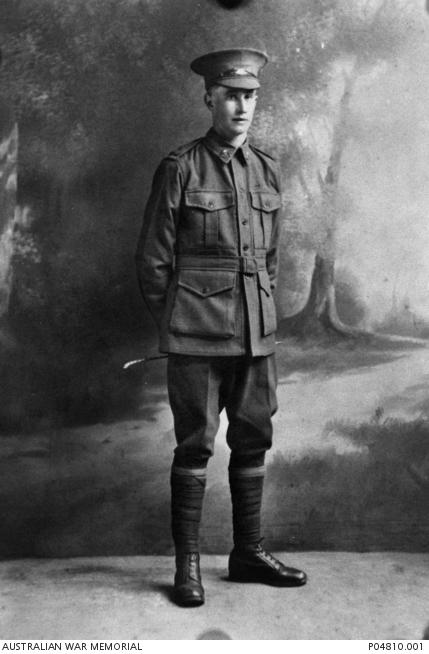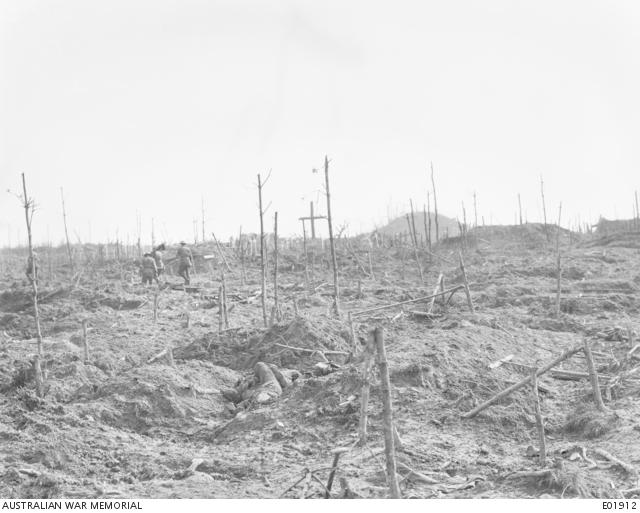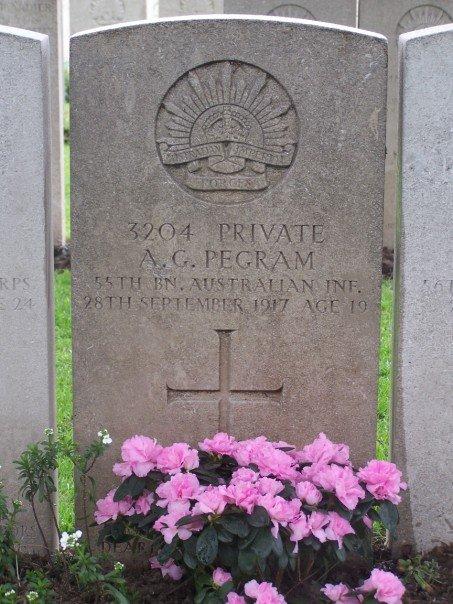One who fell at Ypres: Private Pegram's story

Private Albert George Pegram. C1115823.
The Battle of Polygon Wood was one of the most successful engagements Australian troops participated in during the Passchendaele campaign. On 26 September 1917, the 5th Australian Division successfully captured the German-held positions surrounding the Butte de Polygone, an earth mound that before the war had been the butt-stop of a rifle range. By 1917 with the Germans on the defensive in the Ypres Salient, the Butte was a strategically important position dominating the immediate area, and blocking any further advance towards the Passchendaele ridge. It was the 5th Division’s first major engagement since the costly assault at Fromelles in July 1916. The successful taking of Polygon Wood and the Butte was a proud moment in the division’s history. Success, however, came at a price. Overall the the Australians suffered 5478 casualties in the battle, the majority being in the 5th Division (3723) and the 4th Division (1729) which was attacking immediately alongside the 5th, just north of Polygon Wood.

The Butte at Polygon Wood looms in the background and dominates the area over which the Australians attacked. C54976
One soldier in the 5th Division was Private Albert George Pegram (No. 3204) of 55th Battalion. Polygon Wood was to be his first and only battle. A laborer from Bredbo in New South Wales, he pressured his father to sign his enlistment papers as soon as he turned 18, and joined the AIF on the 21 August 1916. Most of Albert’s cousins and friends had enlisted during the Men from Snowy River recruitment march as it passed through the Monaro region on the way to the training camp at Goulburn just months before. After training at Goulburn, Albert left Sydney on the 11 November 1916 as part of the 8th Reinforcements for the 55th Battalion.
He joined the battalion just in time for the Polygon Wood operation. The 55th Battalion was allocated the task of clearing the German pillboxes on the left flank of the wood whilst the 56th Battalion concentrated its efforts in taking the Butte. Under a barrage which raged in front of the infantry ‘like a Gippsland bushfire’, the infantry advanced and secured the wood within a matter of hours.
The 55th was frantically digging new positions in preparation for a German counter-attack when Albert was seriously wounded. A cousin was with him at the time, and wrote to the Pegram family to tell them that he had been shot in the stomach by a sniper whilst jumping across an exposed trench with the rest of his section. He was evacuated to the 17th Casualty Clearance Station near Poperinge, and succumbed to his wounds two days later.
Albert’s loss was painful for the Pegram family, who never had the means to visit his grave at Lijssenthoeck Military Cemetery, just west of Ypres. His nephew was born the day he died, and was consequently named after him. Albert’s father would never forgive himself for signing his son’s enlistment papers, and his mother would take to her grave his war medals and his memorial plaque. Perhaps the most poignant is a small inscription dedicated to Albert in a Pegram family bible which reads:
‘In his lonely grave he lyes far from all he loved so dear’.

See also Albert Pegram's personal service dossier online via the National Archives of Australia.